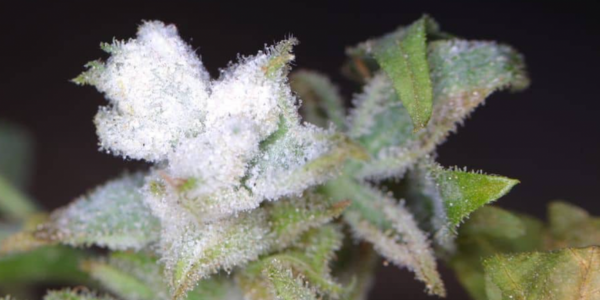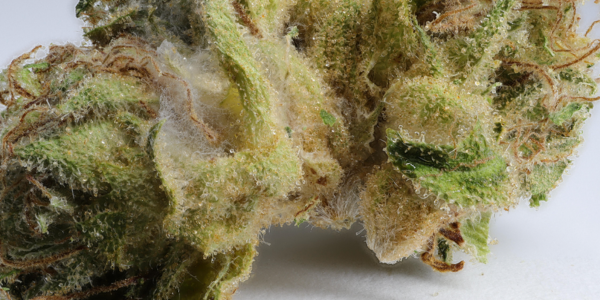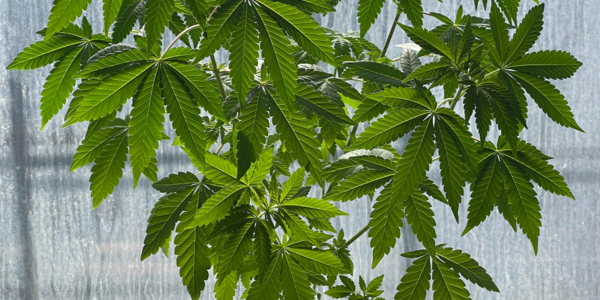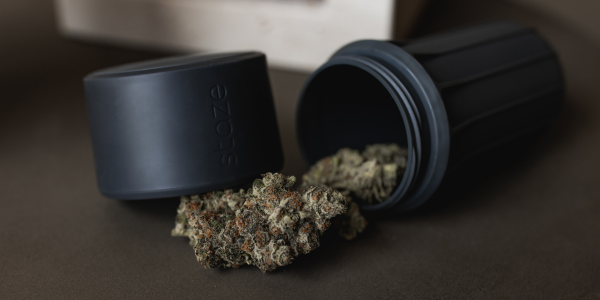Understanding the Risks: Mold on Weed

Importance of Identifying and Preventing Mold Growth on Cannabis Plant.
What Is Mold On Weed
Mold on weed refers to the growth of fungal organisms on cannabis plants or their harvested buds and flowers. It is caused by various types of mold spores, which thrive in high humidity environments. When mold colonizes cannabis, it can compromise its quality and pose potential health risks to consumers.
Identifying Moldy Weed
One of the telltale signs of moldy weed is the presence of visible mold growth on the buds. Mold can appear as grayish or white fuzzy patches, resembling a powdery substance or small, dark spots. Using a black light can also help detect hidden mold, as it emits a fluorescent glow.

Health Consequences of Smoking Moldy Weed
Smoking moldy weed can have serious health consequences. When mold is inhaled, it can irritate the respiratory system, leading to symptoms such as coughing, wheezing, and sinus pain. Prolonged exposure to moldy cannabis can even result in respiratory infections and other complications such as lung infection. In the most critical cases, patients may develop what is called invasive aspergillosis. This is a fungal lung infection that spreads to the blood vessels and travels throughout the body. And remember that, just like any other plant, cannabis has a shelf life, so you want to ensure you use the proper storage solutions.
Preventing Mold Growth on Cannabis Plants During Cultivation
Preventing mold growth on cannabis plants starts with creating an optimal environment for cultivation. Controlling humidity levels is crucial, as high humidity provides favorable conditions for mold to thrive. Monitoring and maintaining relative humidity below 55% can significantly reduce the risk of mold infestation.
Best Practices for Preventing Moldy Weed
Preventing moldy weed involves avoiding exposing cannabis to high humidity and moisture. Proper air circulation within the growing area is crucial, as stagnant air promotes mold growth.
Early Detection and Treatment of Mold on Cannabis plant
Early detection of mold on cannabis is vital to prevent widespread contamination. Regularly inspecting plants for visual signs of mold, such as grayish or white coatings, can help identify the problem early. If mold is detected, prompt action should be taken, such as removing affected parts and improving growing conditions.
Dealing with Bud Rot and Gray Mold on Weed
Bud rot, also known as gray mold or Botrytis cinerea, is a common issue in cannabis cultivation. It affects the buds, causing them to decay and develop a grayish moldy appearance. To manage bud rot, it's essential to ensure proper air circulation, control humidity levels, and promptly remove infected buds to prevent further spread.
The Importance of Cannabis Plant Maintenance
Maintaining clean and healthy cannabis plants is crucial for preventing mold growth. Regular inspections, pruning, and proper plant hygiene help remove potential sources of mold, such as dead leaves and decaying organic matter. Proper plant maintenance reduces the risk of mold infestation and promotes overall plant health.

The Role of Proper Storage in Mold Prevention
Proper storage plays a vital role in preventing mold growth on cannabis flowers. Factors such as temperature, humidity, and exposure to direct sunlight can affect the development of mold. Storing weed in vacuum sealing airtight containers, away from light and at cool temperatures, helps preserve its quality and reduce the risk of mold contamination.
Common Mistakes and How to Avoid Them
To prevent moldy weed, it's important to avoid common mistakes. Excessive exposure to direct sunlight can lead to elevated temperatures and increased humidity, creating favorable conditions for mold growth. Additionally, maintaining low humidity levels and avoiding storing weed in damp areas can help prevent mold infestation.
Proper Storage of Weed to Prevent Moldy Weed
To prevent mold growth in stored weed, it's essential to use airtight vacuum sealing containers. Airtight containers, such as the Staze Preserve, help maintain the freshness and quality of cannabis by preventing moisture from entering. Storing weed in a cool, dark place further minimizes the risk of mold development.

Maintaining a Mold-Free Weed Stash
To keep your weed stash mold-free, it is crucial to store it in airtight containers that prevent moisture from entering. Regularly inspecting your stash for any signs of mold, such as grayish or white patches, helps ensure its quality. Keeping your stash in a cool, dark place minimizes the risk of mold development.
The Importance of Airtight Containers
Using airtight containers for cannabis storage is essential to prevent mold growth. Vacuum sealing airtight containers create a barrier against moisture and prevent mold spores from entering.
Common Signs of Mold on Weed
Visual and olfactory clues can help identify mold on weed. Look for dark spots, grayish or white coatings, and powdery substances on the buds. Moldy weed may also have a distinct odor. Inspecting your cannabis visually and checking for any unusual smell can help detect potential mold contamination.
Importance of Regular Inspections
Regular monitoring and inspections are essential for detecting mold growth on weed early. Identifying mold at an early stage allows for prompt action, preventing its spread to other parts of the plant or other plants in the vicinity. Regular inspections help maintain a healthy cannabis crop and prevent mold-related issues.
Steps to Take if You've Smoked Moldy Weed
If you suspect that you have smoked moldy weed and are experiencing symptoms such as respiratory discomfort or sinus pain, it is important to seek medical help. A healthcare professional can assess your symptoms, provide appropriate treatment, and monitor any potential complications arising from mold exposure.
Understanding Mold Growth on Cannabis
Mold growth on cannabis is influenced by various factors. Not using the proper storage devices, high humidity levels, poor air circulation, and exposure to moisture contribute to mold development. Understanding these factors and implementing measures to create an environment hostile to mold infestation is crucial for maintaining mold-free cannabis plants.
Conclusion
Preventing mold on weed is of utmost importance for both the quality of the cannabis and the health of consumers. By implementing proper cultivation practices, maintaining optimal humidity levels, and storing weed in airtight vacuum sealing containers, you can significantly reduce the risk of mold growth. Regular inspections and early detection of mold on cannabis plants are key to preventing widespread contamination. Remember, smoking mold-free weed ensures a safer and more enjoyable cannabis experience for all.





